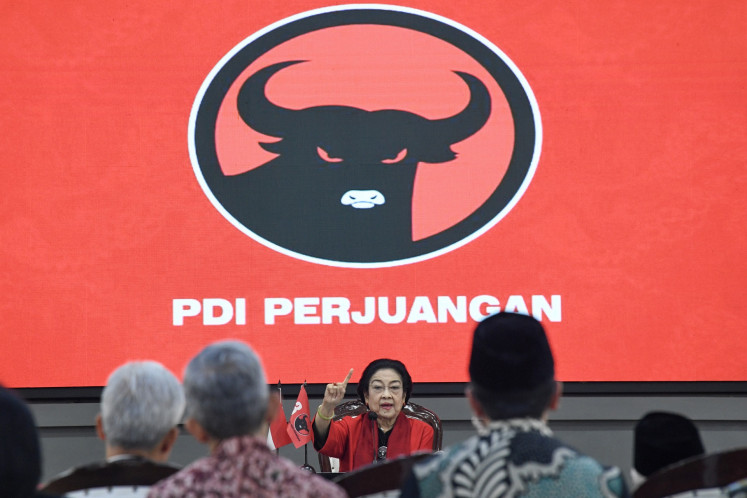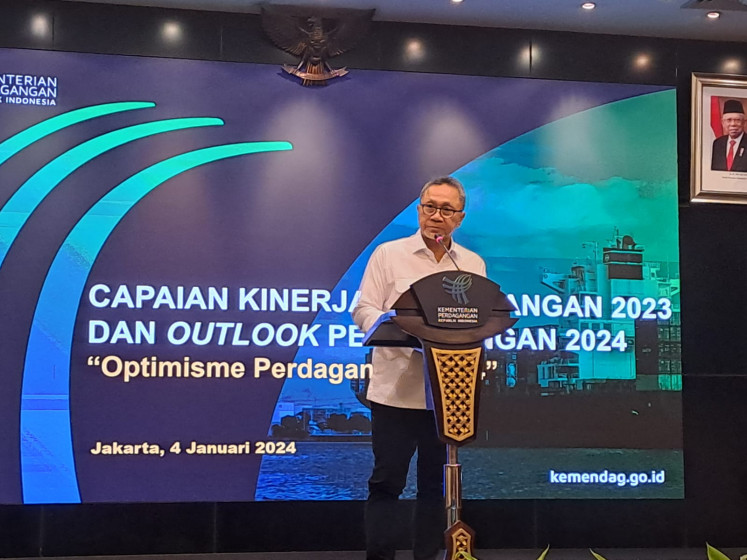Mapping home and hoping for recognition
What is in a map? Borders, territory and more than that, recognition, especially for the Dayak communities whose lives depend on the natural forests, which the government sees as a potential revenue stream
Change Size

W
hat is in a map? Borders, territory and more than that, recognition, especially for the Dayak communities whose lives depend on the natural forests, which the government sees as a potential revenue stream.
Residents of Benua Tengah kampung in Kapuas Hulu are keen to map their own territory. Having occupied the land for generations, the Dayak Taman Embaloh tribe does not possess any documents supporting their ownership claims to their land, where their long house, paddy fields and reserve forests sit.
The need is more notable, especially, as the state often ignores the inhabitants when it issues licenses to companies or declares the area a protected forest.
Conflicts between indigenous communities and the state are frequent in the forested parts of the nation, the secretary-general of Alliance of Archipelagic Indigenous People (AMAN), Abdon Nababan, said.
Several documents published by NGOs concerning forests showed that all conflicts were caused by the absence of public participation and recognition of customary rights when it came to planning.
Participatory mapping, therefore, was one way to fight for recognition. AMAN, which represents 1,183 communities, is helping its members map their land. So far, it has verified 400,000 hectares of forests within the 700,000 hectares of mapped indigenous community territory registered with AMAN’s Indigenous Territory Registry Body. Of the estimated 20 million to 30 million hectares of indigenous territory across the archipelago, AMAN estimates that five million belonged to its members. “Given the trend, half of the five million hectares is likely forested areas,” he said.
This is our land: Apai Janggut, a respected figure in Sungai Utik, keeps several copies of a map of the kampung map in his room. Residents allotted half of the forests of Sungai Utik as a preserve. JP/Evi Mariani
Abdon, however, said the biggest problem they faced was the lack of official recognition for participatory maps. “The best we can do is gain public recognition,” he said.
AMAN has informed the Environment Ministry, which, according to Abdon, supports their efforts. The Forestry Ministry, however, has not responded to AMAN’s efforts.
Forestry Ministry director of forest territory planning Basoeki Karja Atmadja said only his ministry was authorized to map forest territory. He said inhabitants could propose to map their territory, but only with help from the ministry and any changes to previous spatial planning should be registered with the government.
“If they don’t propose changes, we don’t change the maps,” Basoeki said. Proposals, he added, should be submitted to provincial administrations through the regency. The changes, however, cannot be done if the government has issued a license to a company. He said a license was also a government policy that had to be retained. To revoke a license, the government has to compensate the company, a measure guaranteed by the law but without precedent in forestry history.
The 2008 Spatial Planning Law requires provincial administrations to exercise public participation when it comes to planning. Basoeki said his ministry held public participation in high regard.
The complex bureaucracy for indigenous communities to gain recognition of their territory, however, leaves members frustrated. Although residents of Datah Diaan have made a map 10 years ago, any plans regarding the forests in their customary land are made without their consent.
Sungai Utik administrative leader Raymondus Remang said his kampung already had a clear spatial planning, dividing land into reserve and preservation forests. The plan is strictly adhered to as part of local custom, which is designed to sustainably exploit nature.
Raymondus did not recall any meetings with the government to discuss the 2030 spatial planning, something all provincial administrations have to finish by 2010.
The Kayaan community along Mendalam River, Dayak Taman Embaloh in Benua Tengah and Dayak Iban in Sadap and Pulau Manak villages all find themselves in the same boat. They have never been invited or privy to any meeting to discuss their future.
While President Susilo Bambang Yudhoyono sealed a US$1-billion deal with Norway to protect Indonesian forests, the communities who live near the forests have never been asked to participate.
— JP/Evi Mariani









